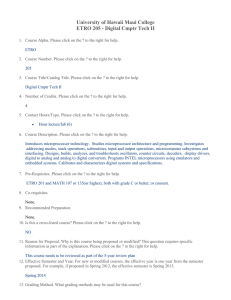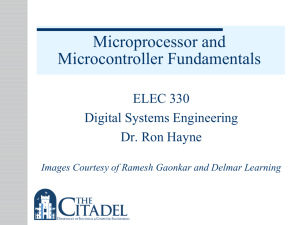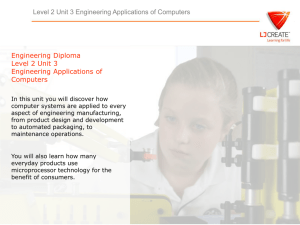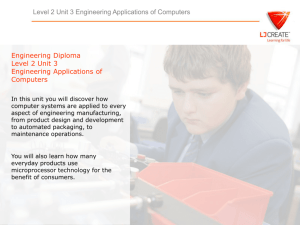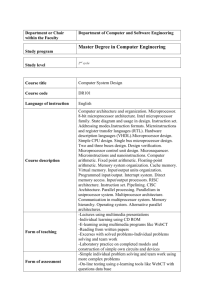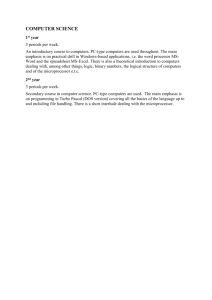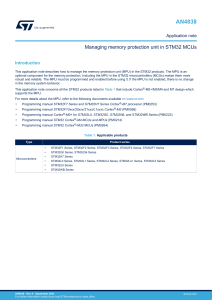Maui Community College Course Outline 1. Alpha and Number
advertisement
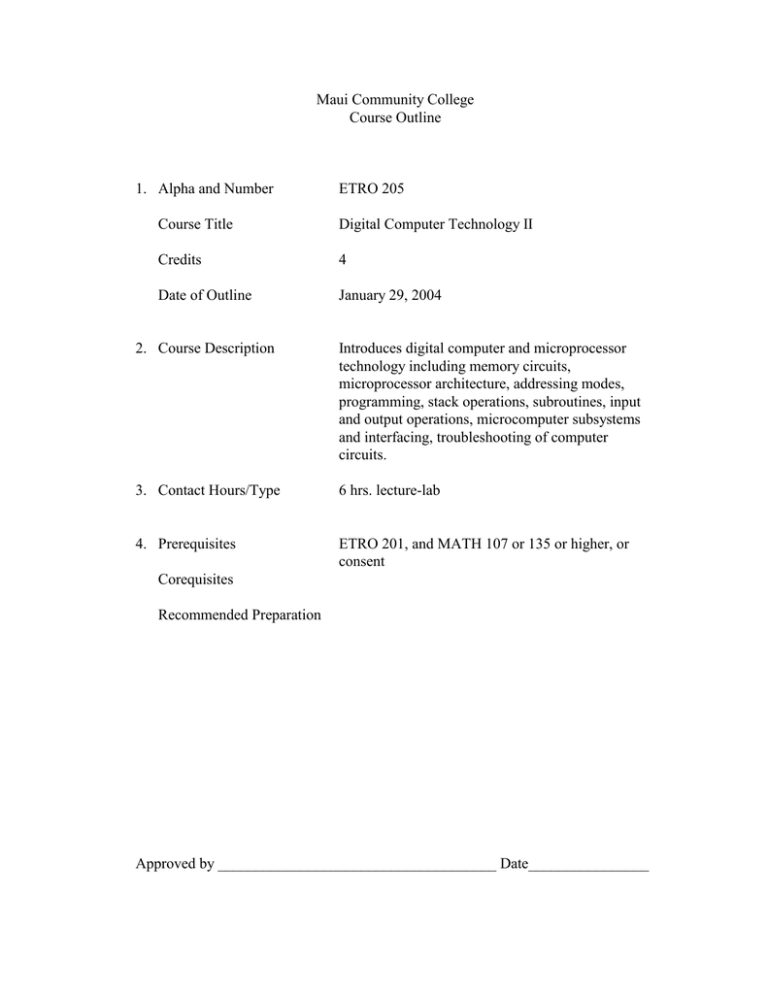
Maui Community College Course Outline 1. Alpha and Number ETRO 205 Course Title Digital Computer Technology II Credits 4 Date of Outline January 29, 2004 2. Course Description Introduces digital computer and microprocessor technology including memory circuits, microprocessor architecture, addressing modes, programming, stack operations, subroutines, input and output operations, microcomputer subsystems and interfacing, troubleshooting of computer circuits. 3. Contact Hours/Type 6 hrs. lecture-lab 4. Prerequisites ETRO 201, and MATH 107 or 135 or higher, or consent Corequisites Recommended Preparation Approved by _____________________________________ Date________________ 2 5. General Course Objectives Analyze and test microprocessor circuits. Program a microprocessor system. Analyze computer building block circuits including MPU, I/O, Power, Data Buss, Address buss and Memory circuits 6. Specific Course Objectives, Competencies, and Student Learning Outcomes On successful completion of this course the student will be able to: a. Describe INPUT/OUTPUT conditions for a microprocessor b. Identify the architecture of typical MPU c. Describe the purpose the instruction set of the MPU d. Identify Logic instructions e. Describe the purpose of Opcodes and their operations f. Identify the voltage thresholds and signals produced by MPU g. Describe operations of Registers and the ALU h. Measure waveforms and logic levels of a MPU i. Plan and flowchart programs j. Write and run program k. Identify Move instructions l. Use Jump and Flag instructions m. Test Call and Returns n. Troubleshoot and debug programs o. Describe I/O instructions p. Use Push and Pop commands q. Identify Control and Mask Interrupts r. Identify and test I/O devices s. Measure outputs of MPU Busses 7. Recommended Course Content and Approximate Time Spent on Each Topic 1-2 weeks Introduction to microprocessor fundamentals (a,b) 1-2 weeks Introduction to instruction sets (a,b,c) 1-2 weeks Microprocessor hardware (a,b,f,h,s) 1-2 weeks Introduction to microprocessor programming ( d,e,g,i,j,n ) 1-2 weeks Algorythms (i,j) 1-2 weeks Microprocessor programming (i,j,k,l,n) 1-2 weeks Sub Routine programming (i,j,m,n,p) 1-2 weeks Input and output programming (i,j,n,o,q,r) 3 8. Text and Materials, Reference Materials, Auxiliary Materials and Content An appropriate text(s) and materials will be chosen at the time the course is to be offered from those currently available in the field. A representative example is: Text: Ronald J. Tocci, Digital Systems-Principles and Applications, PrenticeHall Materials: Text(s) may be supplemented with: Accompanying practice exercises if available Articles, handouts and/or exercises prepared by the instructor Magazine or newspaper articles On-line materials Other: Engineering Notebook 9. Recommended Course Requirements and Evaluation Specific course requirements are at the discretion of the instructor at the time the course is being offered. Suggested requirements might include, but are not limited to: Evaluation and Grading Examinations (written and/or oral) In-class exercises Homework Quizzes Projects/research Attendance and/or class participation 40-60% 0-30% 20-30% 0-30% 0-40% 0-20% 10. Methods of Instruction Instructional methods vary considerably with instructors and specific instructional methods will be at the discretion of the instructor teaching the course. Suggested techniques might include, but are not limited to: Lecture, problem solving, and class exercises or readings Class discussions or guest lectures Audio, visual or presentations involving the internet Visual step-by-step instruction with students following along Student class presentations Group or individual projects Service Learning
